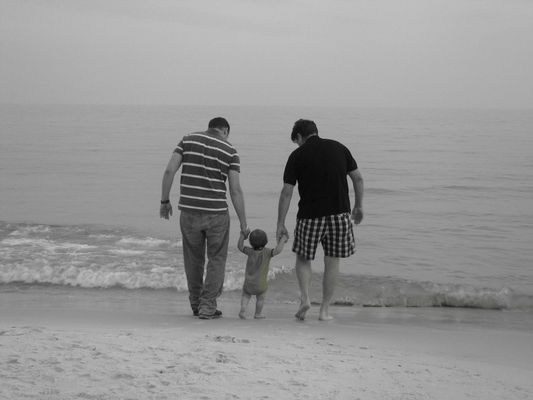1.1.1
Tennessee Williams
The Author: Tennessee Williams
The Author: Tennessee Williams
You should not spend too long talking about the life of the author as you will not gain many marks for doing this. But it is still important to note a few things about the author for context.
Tennessee Williams' Plays
Tennessee Williams' Plays
We need to be careful about fully connecting the author’s life to the text of a play because this can be dangerous. What the author has written may be an ‘imagined construction’ only and have little to do with the author’s life.
_1,h_400,q_80,w_640.jpg)
_1,h_400,q_80,w_640.jpg)
The Glass Menagerie
The Glass Menagerie
- During the winter of 1944–45, Williams' so-called “memory play” The Glass Menagerie, developed from his 1943 short story Portrait of a Girl in Glass, was produced in Chicago and gained good reviews.
- It then moved to New York and was very successful.


A Streetcar Named Desire
A Streetcar Named Desire
- His next play, A Streetcar Named Desire opened in New York in 1947. The play was an instant success.
- It was directed by Elia Kazan – a director who worked closely with Williams.


Other plays
Other plays
- Several other successful plays followed including Summer and Smoke (1948), The Rose Tattoo (1951), Camino Real (1953), and Cat on a Hot Tin Roof (1955).


Blanche
Blanche
- Some critics have argued that the character of Blanche is based on Williams’ sister, Rose Williams, who struggled with mental health issues and became incapacitated after a lobotomy.


Films
Films
- During the early 1950s, The Glass Menagerie and A Streetcar Named Desire were adapted as major motion pictures and this brought Williams international acclaim.


Later life
Later life
- After this early success, however, Williams' work declined following poor decisions.
- He became an alcoholic. In 1963, his partner Frank Merlo died.
- Williams wrote several later plays but few of these were appreciated by critics or audiences.
- On February 25, 1983, Williams was found dead at the age of 71 in his suite at the Hotel Elysée in New York.
1Context & Overview
1.1The Author
1.2Social Context & Setting
2Scene Summaries
2.3Scene Three
2.5Scene Five
2.6Scene Six
2.7Scene Seven
2.9Scene Nine
2.10Scene Ten
3Character Profiles
3.1Blanche DuBois & Stanley Kowalski
3.2Stella Kowalski & Harold Mitchell (Mitch)
4Key Ideas
4.1Sex & Gender
4.2Appearances, Fantasy & Reality
5Writing Techniques
5.2Genre, Form & Language
6Critical Debates
6.1Early & Modern Reception
6.2Feminist, Psychoanalytic & Marxist Approach
7Ideas About Tragedy
7.1Ideas About Tragedy
8Recap: Main Quotes
8.1Main Quotes by Scene
8.1.1Scene One - Quotations
8.1.2Scene Two - Quotations
8.1.3Scene Three - Quotations
8.1.4Scene Four - Quotations
8.1.5Scene Five - Quotations
8.1.6Scene Six - Quotations
8.1.7Scene Seven - Quotations
8.1.8Scene Eight - Quotations
8.1.9Scene Nine - Quotations
8.1.10Scene Ten - Quotations
8.1.11Scene Eleven - Quotations
Jump to other topics
1Context & Overview
1.1The Author
1.2Social Context & Setting
2Scene Summaries
2.3Scene Three
2.5Scene Five
2.6Scene Six
2.7Scene Seven
2.9Scene Nine
2.10Scene Ten
3Character Profiles
3.1Blanche DuBois & Stanley Kowalski
3.2Stella Kowalski & Harold Mitchell (Mitch)
4Key Ideas
4.1Sex & Gender
4.2Appearances, Fantasy & Reality
5Writing Techniques
5.2Genre, Form & Language
6Critical Debates
6.1Early & Modern Reception
6.2Feminist, Psychoanalytic & Marxist Approach
7Ideas About Tragedy
7.1Ideas About Tragedy
8Recap: Main Quotes
8.1Main Quotes by Scene
8.1.1Scene One - Quotations
8.1.2Scene Two - Quotations
8.1.3Scene Three - Quotations
8.1.4Scene Four - Quotations
8.1.5Scene Five - Quotations
8.1.6Scene Six - Quotations
8.1.7Scene Seven - Quotations
8.1.8Scene Eight - Quotations
8.1.9Scene Nine - Quotations
8.1.10Scene Ten - Quotations
8.1.11Scene Eleven - Quotations
Unlock your full potential with Seneca Premium
Unlimited access to 10,000+ open-ended exam questions
Mini-mock exams based on your study history
Unlock 800+ premium courses & e-books




